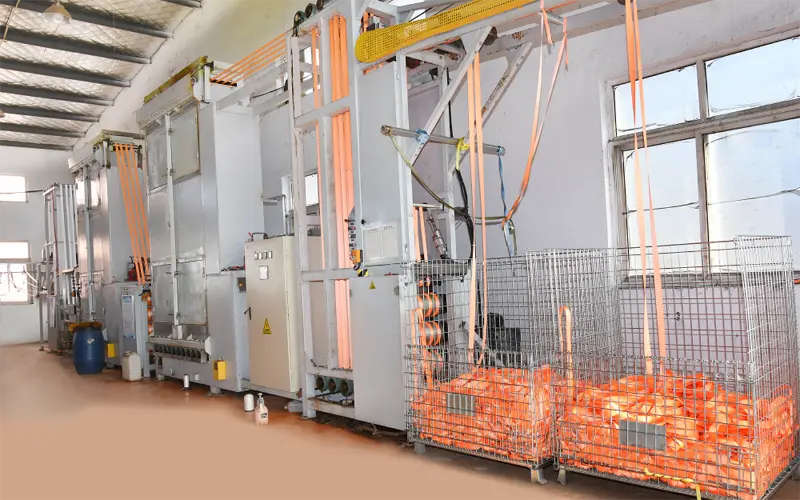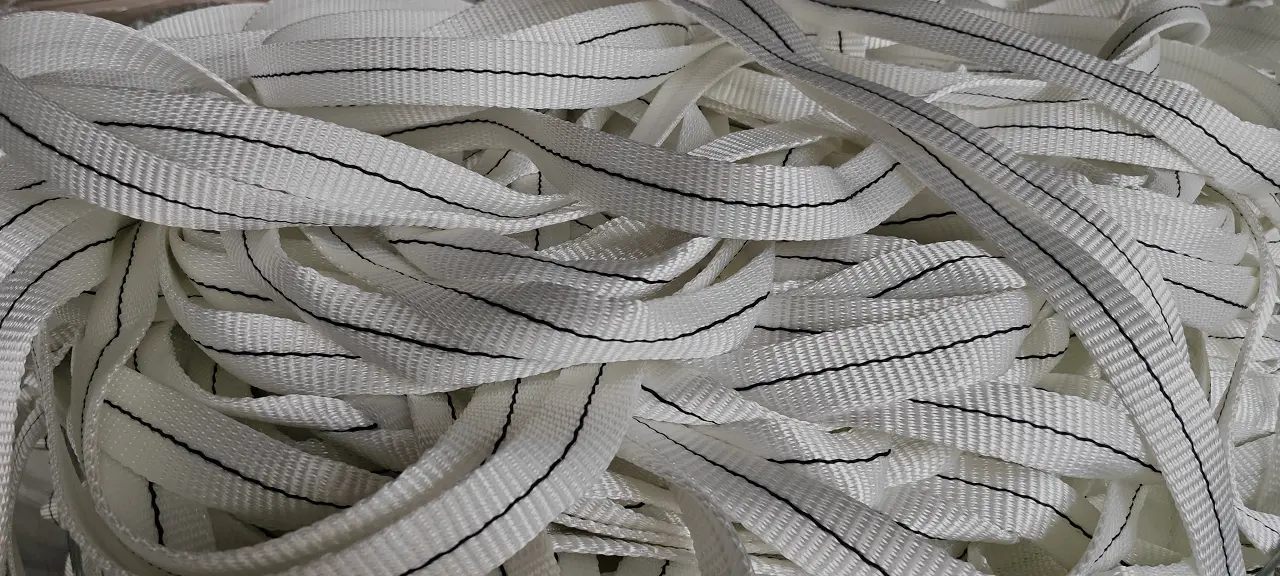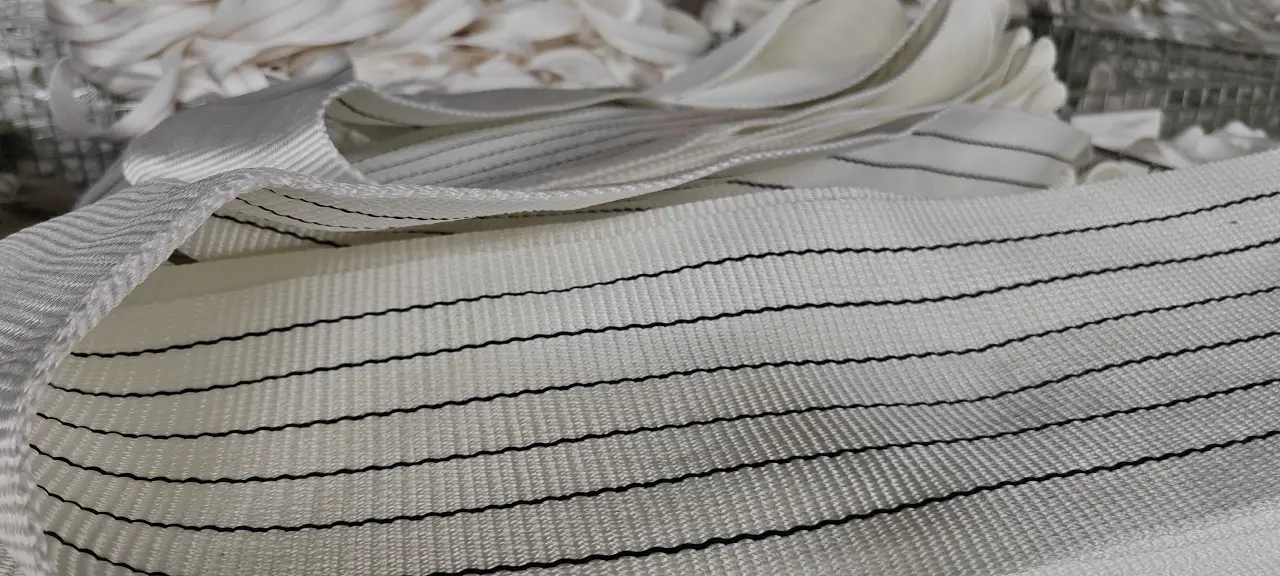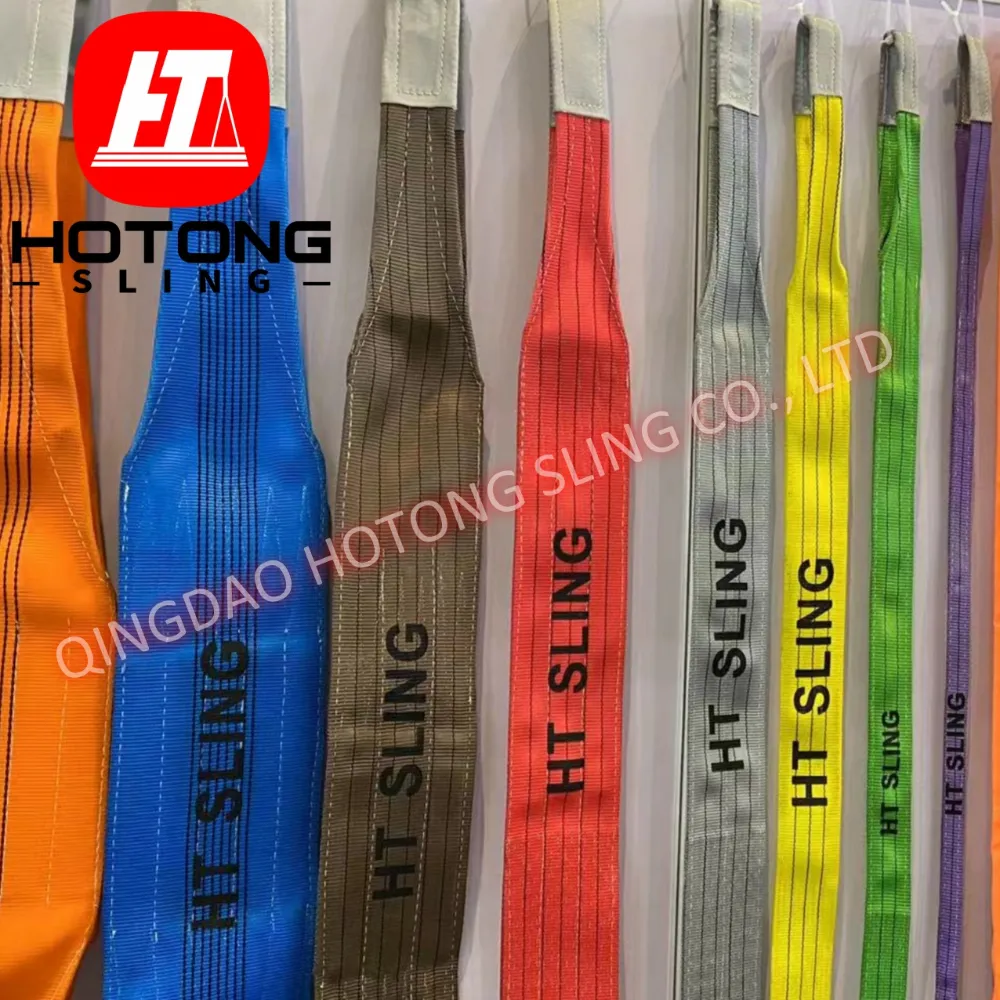Introduction
A Recovery Tow Strap is a strong webbing used to pull vehicles, heavy equipment, or other objects that need to be moved. They are most often used when a car breaks down or gets stuck in mud, snow, or other tough places. Recovery Tow Straps are easy to use and very helpful in emergencies, making them essential for anyone who drives or works with vehicles. Whether you’re helping a friend whose car broke down or rescuing a vehicle from tough terrain, a Recovery Tow Strap can make the job much easier.
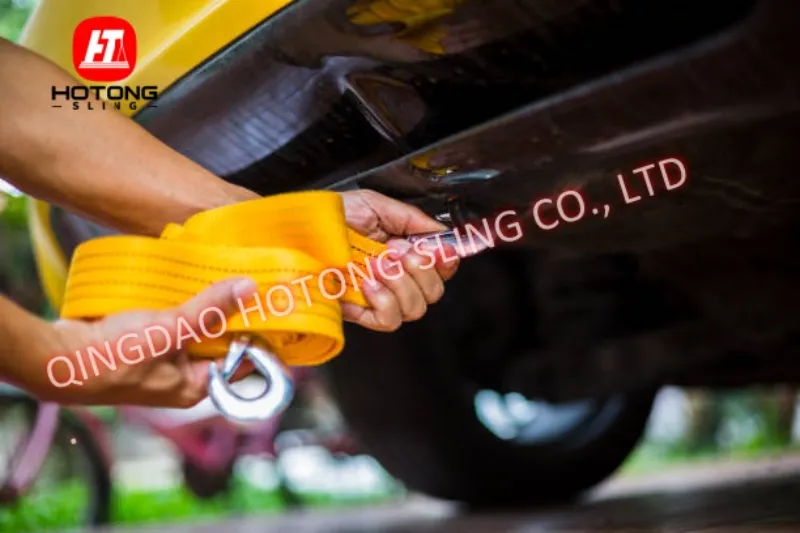
Parts of a Recovery Tow Strap
- The Webbing (Main Strap)
The webbing is the long, strong fabric part of the Recovery Tow Strap. It is usually made from materials like polyester or nylon. These materials are strong enough to pull heavy loads without breaking. The webbing is made to resist stretching, tearing, and even UV rays from the sun. This means it can last a long time even when it is used a lot or left outside. - End Loops
At each end of the Recovery Tow Strap, there is a loop. These loops are made by folding the fabric over and stitching it very securely. The loops are used to attach the Recovery Tow Strap to a car or other vehicle. This makes it easier to hook the Recovery Tow Strap onto the car’s tow point or towing hook. The loops are very important because they hold the weight and pressure when towing.
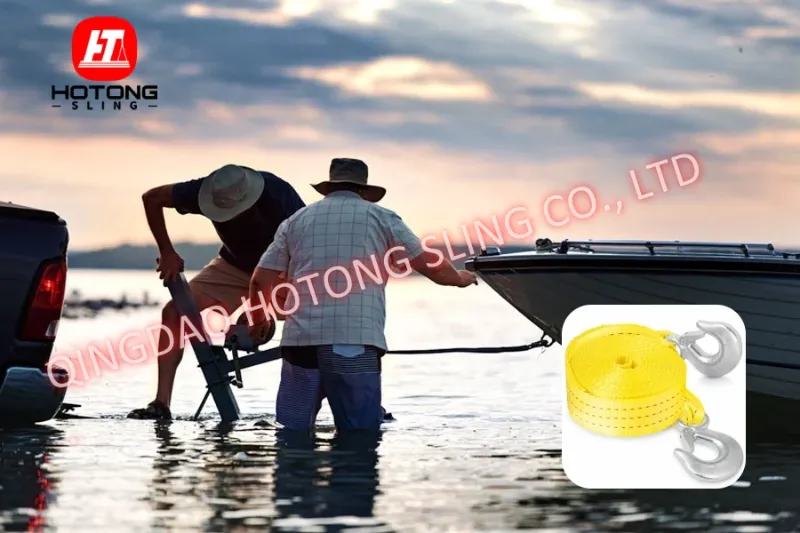
- Hooks (Optional)
Some Recovery Tow Straps come with metal hooks attached to the ends. These hooks make it easier to quickly attach the Recovery Tow Strap to a vehicle. The hooks are made from strong steel and are built to hold the weight of the vehicle being towed. Some Recovery Tow Straps come with hooks, but others just have the loops, depending on the design.
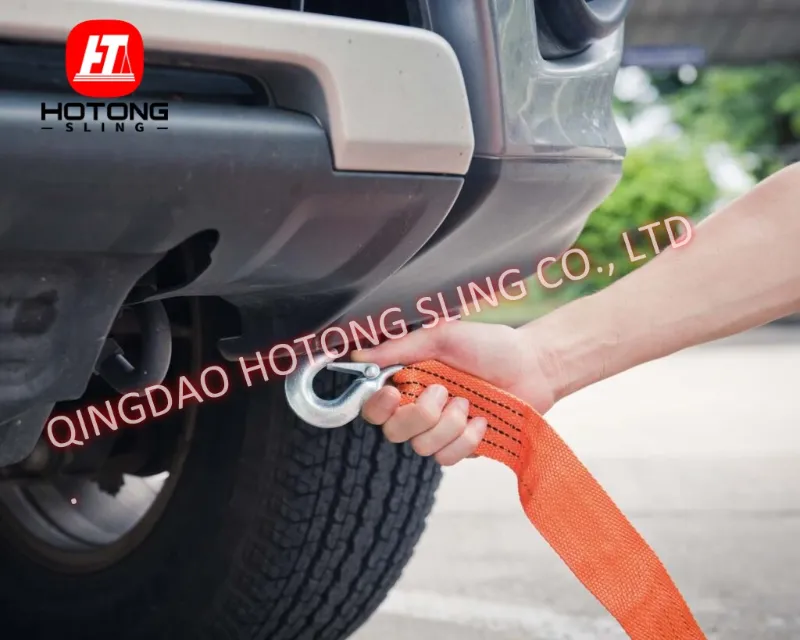
- Reflective Strips (Safety Feature)
Some Recovery Tow Straps have reflective strips sewn onto them. These strips help make the Recovery Tow Strap more visible at night or in bad weather. If you’re using the Recovery Tow Strap in the dark or when it’s raining or snowing, the reflective strips will make it easier for you or others to see the Recovery Tow Strap and stay safe.
Uses of Recovery Tow Straps
- Towing Vehicles
The most common use for a Recovery Tow Strap is to tow cars. If a car breaks down or gets stuck in snow or mud, another vehicle can use the Recovery Tow Strap to pull it out. Recovery Tow Straps are often used by tow truck drivers or anyone who needs to help a car that is stuck or can’t drive on its own. - Emergency Rescue
Recovery Tow Straps are also used in emergencies, like when a car is stuck on the side of the road after an accident or in a disaster (like flooding or heavy snow). Rescue teams and police officers use Recovery Tow Straps to move damaged cars or help people escape dangerous situations. Recovery Tow Straps make it easier to get vehicles out of difficult places quickly.
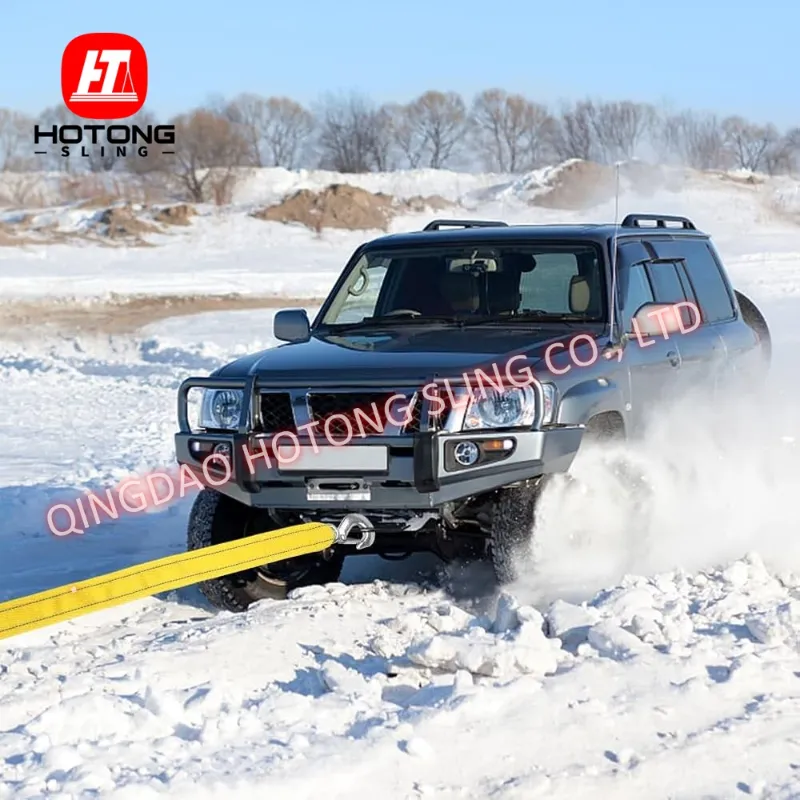
- Construction and Transport
Recovery Tow Straps are also helpful on construction sites. Large machines and equipment are often moved using Recovery Tow Straps, especially when the ground is too rough for wheels or tracks. Recovery Tow Straps help workers drag heavy equipment or move it to different locations.
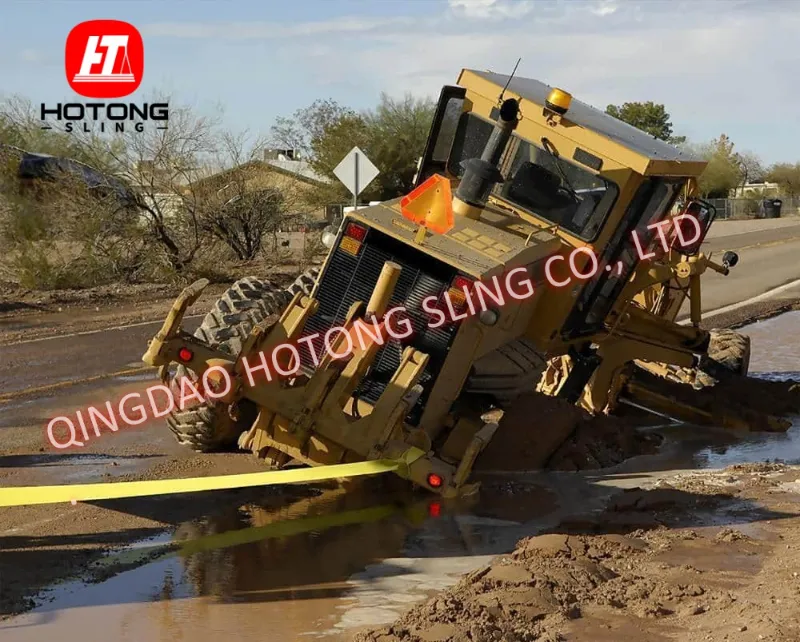
- Boats and Marine Rescue
Recovery Tow Straps are not just for cars on land! They are also used for pulling boats, especially if they are stuck in the water or need to be moved. Boats can get stuck in mud or shallow water, and a Recovery Tow Strap helps pull them back to deeper water or the dock.
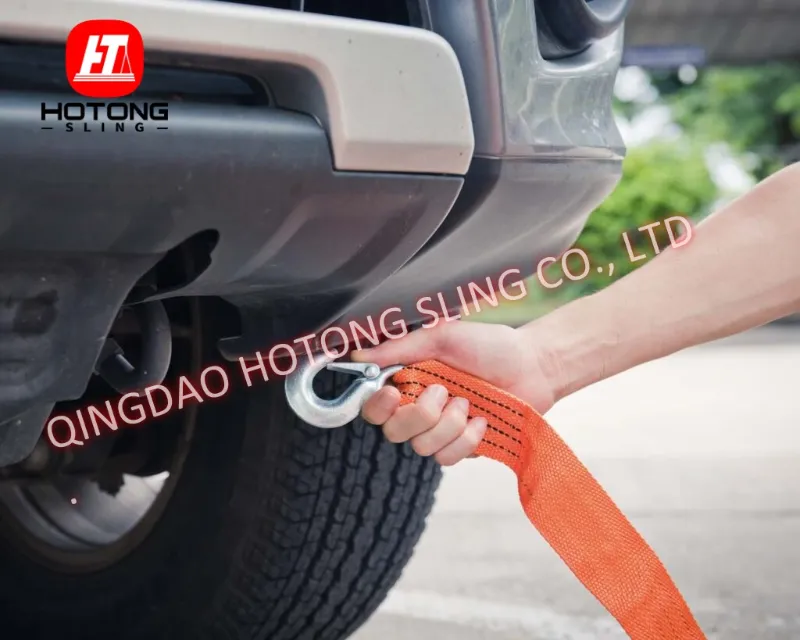
How to Use a Recovery Tow Strap
- Check the Recovery Tow Strap First
Before using a Recovery Tow Strap, always check it for any damage. Make sure there are no frays, rips, or tears. You also want to make sure that the Recovery Tow Strap has the strength (called “Lashing Capacity”) to pull the vehicle or object you want to tow. Recovery Tow Straps come with labels showing how much weight they can safely pull. - Attach the Recovery Tow Strap
Next, you’ll need to attach the Recovery Tow Strap to the vehicle. The loops on the ends of the Recovery Tow Strap should be placed on the tow points of the car—this is usually on the front or back of the vehicle. If the Recovery Tow Strap has hooks, attach the hooks to the tow points. Make sure the Recovery Tow Strap is securely attached before you start pulling. - Pull Slowly and Steadily
When you start pulling the other vehicle, do it slowly. Don’t jerk or slam on the gas pedal. Sudden movements can cause the Recovery Tow Strap to snap or break. Instead, pull slowly and steadily. This will keep the tension even and help prevent the Recovery Tow Strap from getting damaged. - Store the Recovery Tow Strap Properly
After using the Recovery Tow Strap, be sure to clean it if it’s dirty and let it dry. You should store it in a dry place away from direct sunlight to prevent damage. Don’t leave the Recovery Tow Strap out in the sun for too long, as UV rays can weaken the fabric.
Important Point: Lashing Capacity
Lashing Capacity is the maximum weight a Recovery Tow Strap can safely pull. It’s really important to use the right Recovery Tow Strap for the job. If you try to tow something that’s too heavy for the Recovery Tow Strap, it could break. For example, if a Recovery Tow Strap has a Lashing Capacity of 5,000 kg, it means it can safely pull up to 5,000 kg (about 11,000 pounds). Always check the Recovery Tow Strap’s label to make sure it can handle the weight of the vehicle you’re towing.
Width and Length of Recovery Tow Straps
- Width
Recovery Tow Straps come in different widths. A wider Recovery Tow Strap can pull more weight. For lighter vehicles, you can use a narrower strap, but for larger vehicles or heavy equipment, a wider strap is needed. Recovery Tow Straps can range from about 1 inch (2.5 cm) to 4 inches (10 cm) wide. - Length
Recovery Tow Straps are also different lengths, typically from 10 feet (3 meters) to 30 feet (9 meters). If you’re towing over a long distance, a longer Recovery Tow Strap is better. For short-distance towing, a shorter Recovery Tow Strap works fine. You should choose the length based on how far the vehicles are from each other.
| Lashing Capacity(kg) | Width(mm) | Length(m) | Application |
| 3000 | 45 | 4 | Car Jeep |
| 3000 | 45 | 6 | Car Jeep |
| 4000 | 60 | 4 | Car Jeep |
| 4000 | 60 | 6 | Car Jeep |
| 5000 | 60 | 4 | Car Jeep |
| 5000 | 60 | 6 | Car Jeep |
| 8000 | 90 | 4 | Car Jeep |
| 8000 | 90 | 6 | Car Jeep |
| 8000 | 50 | 6 | Truck |
| 12000 | 75 | 6 | Truck |
| 15000 | 75 | 6 | Heavy Truck |
| 20000 | 100 | 6 | Heavy Truck |
Things to Remember
- Don’t Overload the Recovery Tow Strap
Always use a Recovery Tow Strap that can handle the weight of the vehicle you’re towing. Don’t try to pull something too heavy, or the Recovery Tow Strap could break. Always check the Recovery Tow Strap’s label for its Lashing Capacity. - Check and Maintain Your Recovery Tow Strap
Regularly check your Recovery Tow Strap for damage. If the strap looks worn out or damaged, replace it right away. A broken Recovery Tow Strap can cause accidents or damage to the vehicles. - Avoid Sharp Objects
Make sure the Recovery Tow Strap doesn’t come in contact with sharp objects like rocks or metal edges, which could tear it. Keep the Recovery Tow Strap away from any obstacles that could cause damage during use.
Conclusion
A Recovery Tow Strap is an important tool for pulling vehicles and heavy equipment. It’s easy to use, but you should always make sure to check the Recovery Tow Strap before using it, and use it correctly. Whether you’re helping a friend whose car broke down, working on a construction site, or in an emergency rescue situation, knowing how to use a Recovery Tow Strap safely will make a big difference.

